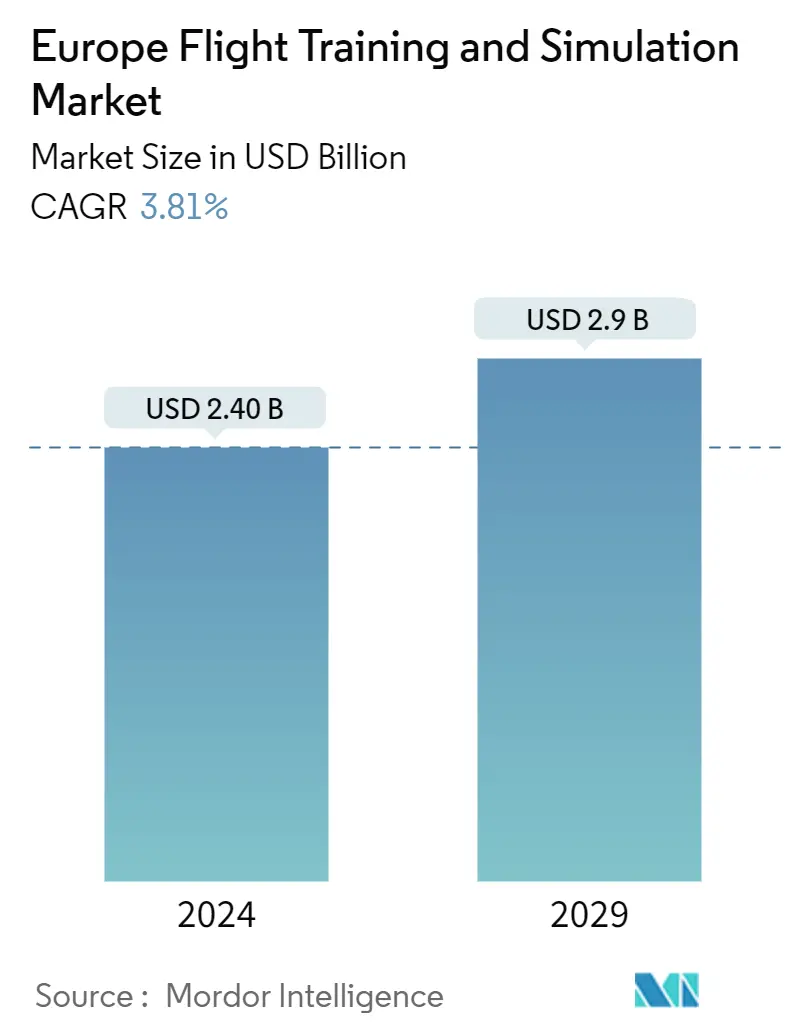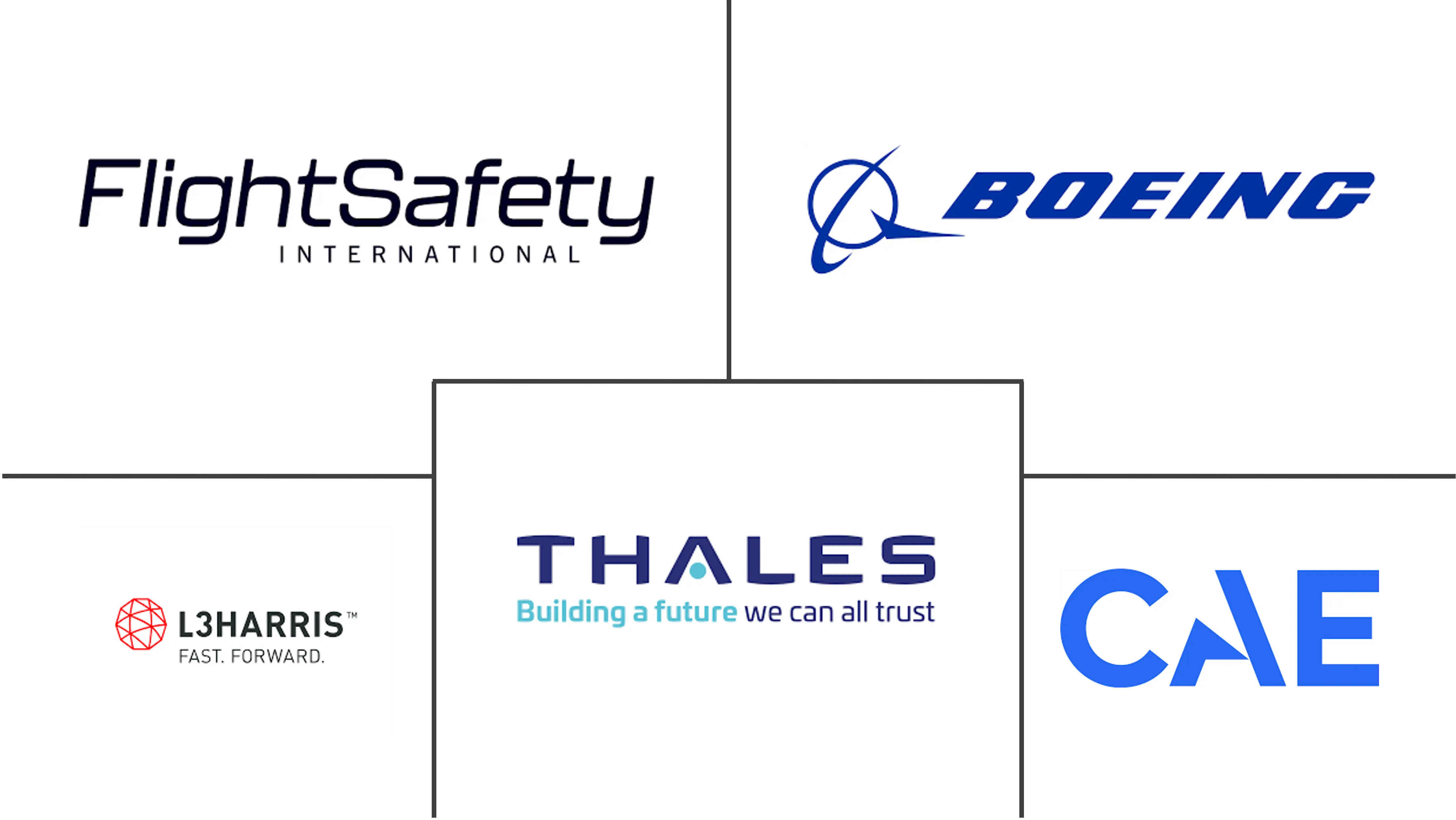Market Size of Europe Flight Training And Simulation Industry

| Study Period | 2019-2029 |
| Base Year For Estimation | 2023 |
| Market Size (2024) | USD 2.40 Billion |
| Market Size (2029) | USD 2.9 Billion |
| CAGR (2024 - 2029) | 3.81 % |
| Market Concentration | Medium |
Major Players
*Disclaimer: Major Players sorted in no particular order |
Need a report that reflects how COVID-19 has impacted this market and its growth?
Europe Flight Training and Simulation Market Analysis
The Europe Flight Training And Simulation Market size is estimated at USD 2.40 billion in 2024, and is expected to reach USD 2.9 billion by 2029, growing at a CAGR of 3.81% during the forecast period (2024-2029).
Increasing passenger traffic is encouraging airlines to procure new aircraft, which, in turn, is creating an acute pilot shortage. Thus, aviation training institutes in the region are modernizing their training capabilities via procuring new simulator equipment to train a larger batch of aviation aspirants per year while adhering to the certification criteria of the regulatory agencies.
Another driver for the market is the increasing demand for well-trained aviation pilots in Europe. As the aviation industry experiences continuous expansion and modernization, there is a growing demand for skilled pilots and crew members. Flight training and simulators play a critical role in providing realistic and immersive training experiences, enabling aspiring aviators to acquire the necessary skills in a safe and controlled environment.
Regulatory initiatives and standards set by aviation safety authorities also contribute to the market's growth. Compliance with stringent safety regulations necessitates standardized training programs, driving the adoption of advanced flight training and simulation systems. These systems enable training schools to align their programs with regulatory requirements, ensuring that pilots receive training that meets the highest safety standards.
Despite the demand, the adoption of flight simulators may be deterred by the inherently steep operational and maintenance costs that are multi-fold higher than the initial procurement price. Setting up a flight training institute requires a high initial investment in acquiring and maintaining advanced flight simulation systems. The cost of implementing state-of-the-art simulators can be restraining, particularly for smaller aviation training organizations and emerging players in the market.
